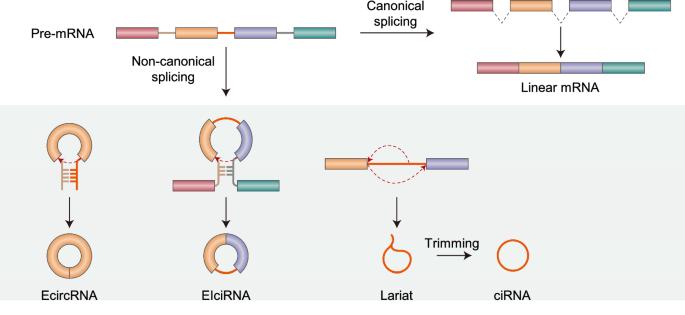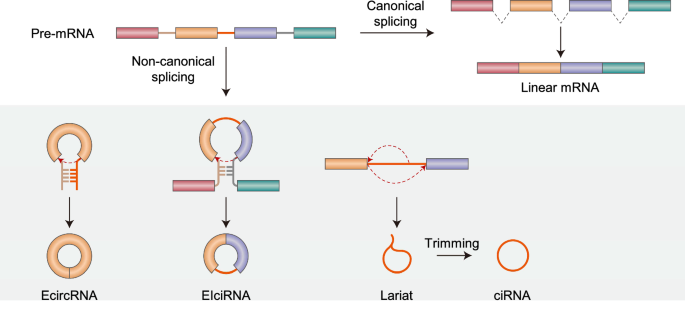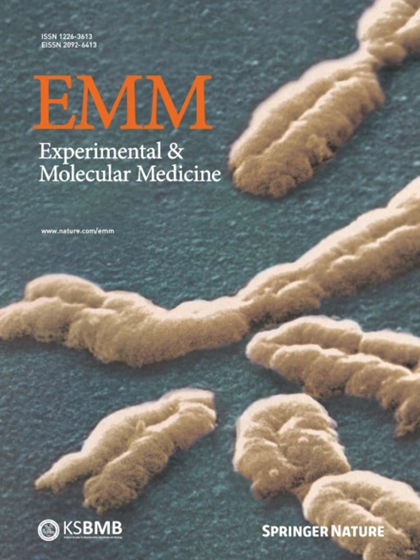环状 RNA 翻译的分子机制。
IF 9.5
2区 医学
Q1 BIOCHEMISTRY & MOLECULAR BIOLOGY
引用次数: 0
摘要
环状 RNA(circRNA)是共价封闭的单链 RNA,没有真核细胞线性 mRNA 中常见的 5'帽结构和 3'聚(A)尾。CircRNA 主要通过细胞核内的反向剪接过程产生。CircRNA 长期以来一直被认为是非编码 RNA,似乎没有编码蛋白质的潜力。然而,最近的许多研究对这一观点提出了质疑,并提供了大量证据表明,一部分 circRNA 可以与多聚体结合,并且确实可以被翻译。因此,在这篇综述中,我们主要强调环状 RNA 上发生的不依赖于 5' 帽的内部起始翻译。环状 RNA 的几个分子特征,包括内部核糖体进入位点、N6-甲基腺苷修饰以及反向剪接事件后沉积在反向剪接交界处周围的外显子交界复合物,在其高效内部翻译中起着关键作用。我们还提出了 circRNA 的可翻译性与其稳定性之间可能存在的关系,重点是无义介导的 mRNA 衰减和不停顿衰减,这两种机制都是已被证实的 mRNA 监控机制。对 circRNA 翻译的深入了解将重塑并扩展我们目前的蛋白质组学知识。本文章由计算机程序翻译,如有差异,请以英文原文为准。


Molecular mechanisms of circular RNA translation
Circular RNAs (circRNAs) are covalently closed single-stranded RNAs without a 5′ cap structure and a 3′ poly(A) tail typically present in linear mRNAs of eukaryotic cells. CircRNAs are predominantly generated through a back-splicing process within the nucleus. CircRNAs have long been considered non-coding RNAs seemingly devoid of protein-coding potential. However, many recent studies have challenged this idea and have provided substantial evidence that a subset of circRNAs can associate with polysomes and indeed be translated. Therefore, in this review, we primarily highlight the 5’ cap-independent internal initiation of translation that occurs on circular RNAs. Several molecular features of circRNAs, including the internal ribosome entry site, N6-methyladenosine modification, and the exon junction complex deposited around the back-splicing junction after back-splicing event, play pivotal roles in their efficient internal translation. We also propose a possible relationship between the translatability of circRNAs and their stability, with a focus on nonsense-mediated mRNA decay and nonstop decay, both of which are well-characterized mRNA surveillance mechanisms. An in-depth understanding of circRNA translation will reshape and expand our current knowledge of proteomics. This research delves into the intricate realm of circular RNAs (circRNAs), a kind of RNA molecule that forms a covalently closed circular structure, making it more stable than its linear counterparts. Despite being plentiful in cells, the role of circRNAs is largely a mystery. The researchers provide a summary of the various ways circRNAs are created and outline the different functions they can have. They also explore the molecular specifics of how circRNAs are translated and consider the potential interaction between this translation and their stability. The research is a review, summarizing and analyzing existing studies on the subject and highlighting the role and potential impact of circRNAs in the regulation of gene expression. This summary was initially drafted using artificial intelligence, then revised and fact-checked by the author.
求助全文
通过发布文献求助,成功后即可免费获取论文全文。
去求助
来源期刊

Experimental and Molecular Medicine
医学-生化与分子生物学
CiteScore
19.50
自引率
0.80%
发文量
166
审稿时长
3 months
期刊介绍:
Experimental & Molecular Medicine (EMM) stands as Korea's pioneering biochemistry journal, established in 1964 and rejuvenated in 1996 as an Open Access, fully peer-reviewed international journal. Dedicated to advancing translational research and showcasing recent breakthroughs in the biomedical realm, EMM invites submissions encompassing genetic, molecular, and cellular studies of human physiology and diseases. Emphasizing the correlation between experimental and translational research and enhanced clinical benefits, the journal actively encourages contributions employing specific molecular tools. Welcoming studies that bridge basic discoveries with clinical relevance, alongside articles demonstrating clear in vivo significance and novelty, Experimental & Molecular Medicine proudly serves as an open-access, online-only repository of cutting-edge medical research.
 求助内容:
求助内容: 应助结果提醒方式:
应助结果提醒方式:


